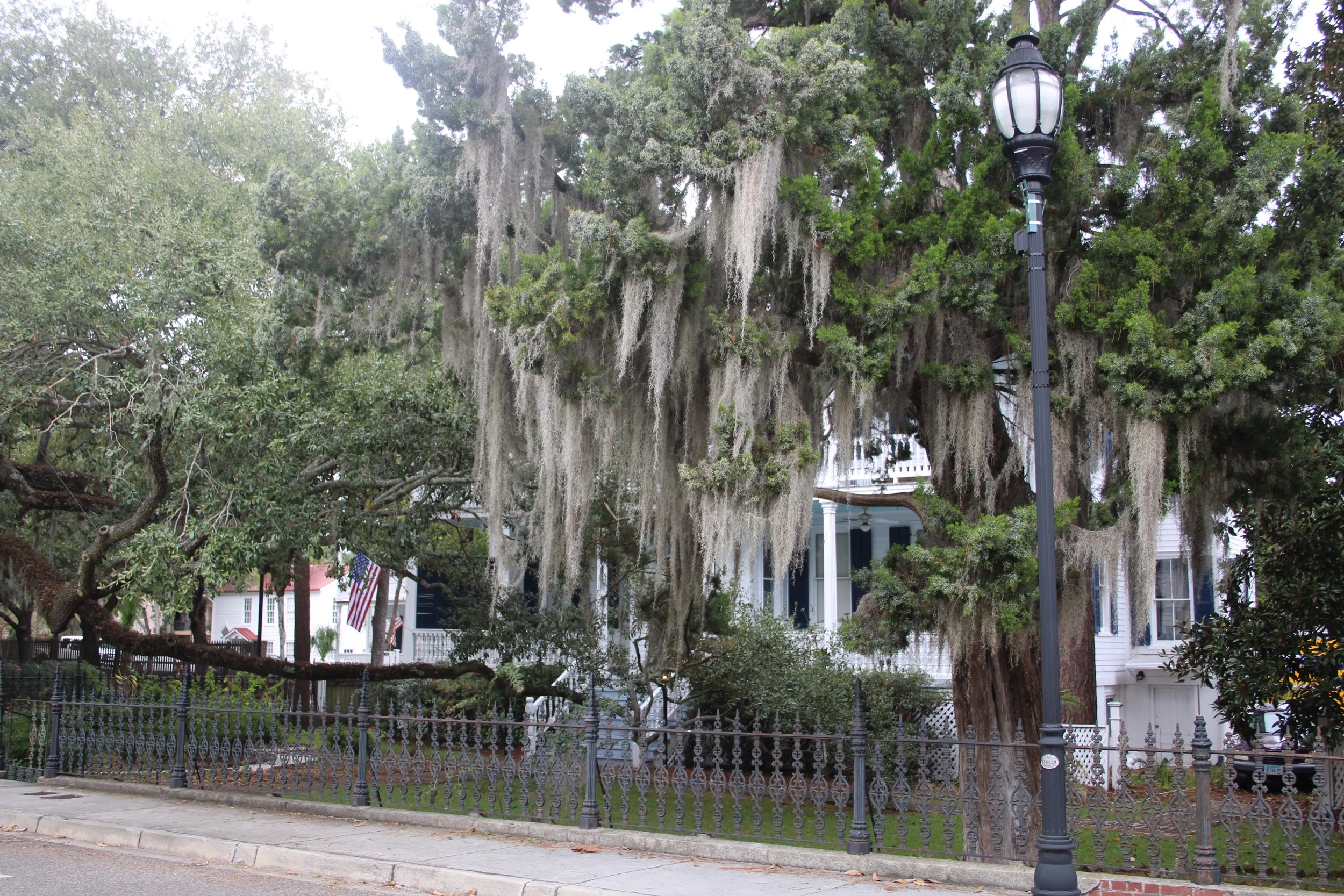I identify Spanish moss with the South Carolina low country, so I was surprised to find its silver threads adorning a tree at a friend’s (zone 7, upstate SC) back yard cookout last week. As an imaginative kid, I loved the stuff. It had a mystical, spooky quality that conjured up images of Halloween. My mother always warned me away from it, convinced that it housed ticks and other unsavory inhabitants. Not until today did I learn the truth.
Spanish moss is not Spanish. It is native to the southeast and is found from North Carolina to Texas. And it’s not a moss. It is an epiphyte (air plant) in the same family (Bromeliaceae) as pineapple and some succulents. It does not have roots and is not a parasitic plant like mistletoe. It absorbs moisture and nutrients from the air, not host trees. The need for moist air explains why it is found along coastal areas, but it can be grown outdoors in zones 8-11 or even as a houseplant if its need for moist air is met. If given a protected spot, it may survive in zone 7 also.
Spanish moss (Tillandsia usneoides, pronounced til-LAND-see-uh us-nee-OY-deez) has several other common names, including Old Man’s Beard, Grandfather’s Whiskers, and Wool Crepe. It can be used to weave coarse cloth or rope, as packing material for fragile objects, as mulch either outdoors or on houseplants, or in craft projects. While it is not a preferred home for ticks, it does provide shelter for bats, several species of birds, and a rare spider. I observed a pair of Bald Eagles gleaning the moss from a tree in Beaufort, SC. I suspect it was going to become a nest liner for their family. According to Dr. John H. Lienhard at the University of Houston, in past centuries the strands were included in bricks and mortar to make them stronger, were used to fill mattresses, and even used to stuff the car seats of Henry Ford’s Model A.(See https://www.uh.edu/engines/epi2506.htm )
Spanish moss threads are covered with scales (“trichomes”) that absorb moisture and catch dust particles from which it extracts needed nutrients. These scales also keep the plant from drying out. Once the scales die, they become tough, but even dead scales hold fast to each other. Plants rarely reach more than a foot in length. The long, long strands that you see swaying in beach breezes are not a continuous strand but a family of plants hanging onto each other, like a children’s Barrel of Monkeys game.
Plants thrive in full sun to part shade and are intolerant of air pollution. Spanish moss blooms several months in summer and early fall but the tiny flowers in shades of blue or green are easily overlooked. The flowers are fragrant, if you can get close enough to sniff them. While seen most often on oak trees, plants will cling to fence posts or telephone wires.
A stately home in Beaufort, SC is surrounded by oaks festooned with Spanish moss.
This pair of eagles, on St. Helena Island, filled their beaks with the wiry threads for (I assume) nest construction.


